Arabic Fulful alahmar, Fulful haar, Shatta, Fulaifilah har
English Cayenne pepper, Red pepper, Chilli, Chili
French Poivre rouge, Piment enrag?, Piment fort, Piment-oiseau, Poivre de Cayenne
Hebrew פלפל אדום, פלפל חריף, פפריקה חריפה, צילי, צ'ילי Paprika harifa, Papriqa charifa, Pilpel adom, Pilpel harif, Tsili
Italian Peperone, Diavoletto, Peperoncino, Pepe di Caienne, Pepe rosso picante
Portuguese Piment?o, Pirip?ri, Pimenta de caiena
Spanish Chile, Guindilla, Cayena inglesa, Pimienta de Cayena, Pimienta picante, Aj?

A generic name, also spelled "chili," given to a broad range of over 200 varieties of hot peppers. Chile peppers are grown in different shapes, sizes, and flavors. From round to long and narrow, the pepper can range in size from less than an inch to over 12 inches in length. They can be round and globe-shaped or long and narrow with a pointed end.
The intensity of their flavor ranges from mild to extremely hot. Generally,
intensity of the heat in the taste of the pepper decreases as the size of the pepper increases. Thus, the larger peppers are most often mild, while the smaller peppers are spicy and hot. The fiery burning sensation present in some peppers is due to the natural substance called
capsaicin that produces the hot taste in the mouth. Capsaicin is present in the inner white ribs (pith) running down the middle and sides of the pepper. Removal of the ribs, as well as the seeds that rub against the ribs and absorb the spicy capsaicin, will reduce the hot intensity of the pepper. Another alternative to counteract the hot taste is to use milk, yogurt, bread, or rice to absorb the intensity of the capsaicin. In dairy products, the substance casein exists which assists to break down the heat effects of capsaicin.

Peppers are available in various colors such as red, green, orange, yellow, white, and black. When selecting peppers, choose any that do not have a wrinkled or dull colored outer flesh. Some of the most common Chile peppers are: Anaheim, Ancho, Cascabel, Cayenne, Charleston Hot, Cherry Pepper, Chilaca, Chilhuacle, Chipolte, Fresno, Guajillo, Guero, Habanero, Jalapeno, Jamaican hot, Italian Frying, Japanese Sweet, Mulato, Pasilla, Pepperoncini, Pequin, Pimiento, Poblano, Red Pepper, Ristra, Santa Fe Grande, Scotch Bonnet, Serrano, Sweet Peppers, Thai Chile, Togarashi, and Viejo Arruga Dulce. Some of the smallest varieties of peppers are round peppers that are often referred to as "ornamental" or "wild" peppers. There are a variety of colors such as red, green, black, and purple that are readily available and can be used to add color or flavor to various dishes.
When preparing hot peppers, use caution not to touch the eyes or similar areas that can be painfully affected by the capsaicin that rubs off on hands. To assist in removing capsaicin from hands, use dairy products such as yogurt or ice cream, rubbing the product over the areas affected. Also, another alternative is to use a combination of cooking oil, such as olive oil, and dish detergent to create a wash that will reduce the effects of the capsaicin residue.
Fresh peppers are best stored in a refrigerator while dried peppers are best kept in dry, dark cool storage areas.
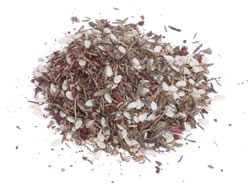
 This Jordanian herbal blend contains sumac, thyme, marjoram, and other spices. Sprinkle on meatballs or vegetables. A delicious addition to salads and dips. Mix with olive oil to create a paste to be spread on bread before baking. Tasty when rubbed on flatbread and pita. Mix 6 tsp of Za'atar with 1/4 cup olive oil, 1/4 cup wine, and minced shallots and garlic cloves to be rubbed on a whole chicken for baking.
This Jordanian herbal blend contains sumac, thyme, marjoram, and other spices. Sprinkle on meatballs or vegetables. A delicious addition to salads and dips. Mix with olive oil to create a paste to be spread on bread before baking. Tasty when rubbed on flatbread and pita. Mix 6 tsp of Za'atar with 1/4 cup olive oil, 1/4 cup wine, and minced shallots and garlic cloves to be rubbed on a whole chicken for baking.





 3 1/2 teaspoons paprika
3 1/2 teaspoons paprika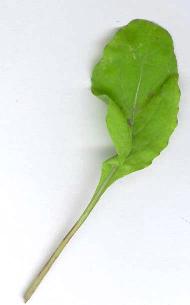
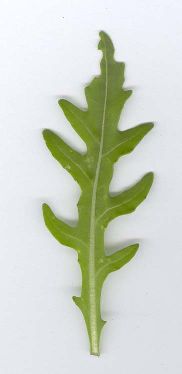

 Arabic Baqdounis, Baqdunis; Maqdounis, Maqdunis (North Africa)
Arabic Baqdounis, Baqdunis; Maqdounis, Maqdunis (North Africa) 
 What to look for
What to look for  Parsley goes with
Parsley goes with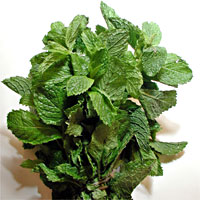 Arabic Eqama, Nana
Arabic Eqama, Nana 



 Arabic ?????? ?????????? Zanjabeel, Zanjabil
Arabic ?????? ?????????? Zanjabeel, Zanjabil  Ground ginger is most commonly used in European and American cooking in baked goods - more and more, however, even mainstream cookbooks call for the freshly grated version. Ground ginger (think gingerbread) is much different in flavor than the fresh kind, and the two should not be substituted in most baked goods. Although lacking the characteristic zip of the fresh form, ground ginger does make an excellent addition to soups and curries, as well as the occasional compote.
Ground ginger is most commonly used in European and American cooking in baked goods - more and more, however, even mainstream cookbooks call for the freshly grated version. Ground ginger (think gingerbread) is much different in flavor than the fresh kind, and the two should not be substituted in most baked goods. Although lacking the characteristic zip of the fresh form, ground ginger does make an excellent addition to soups and curries, as well as the occasional compote.



 Quatre-?pices. Four-spice is a ground spice mixture usually containing
Quatre-?pices. Four-spice is a ground spice mixture usually containing 




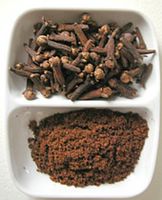 Arabic ??? ????? ????? ?????????, ?????? ????????? Kabsh qarunfil, Kabsh qaranful
Arabic ??? ????? ????? ?????????, ?????? ????????? Kabsh qarunfil, Kabsh qaranful 

 Arabic ???? ???? ??????? ???????, ??????? ??????? Fulful aswad, Filfil aswad
Arabic ???? ???? ??????? ???????, ??????? ??????? Fulful aswad, Filfil aswad 






